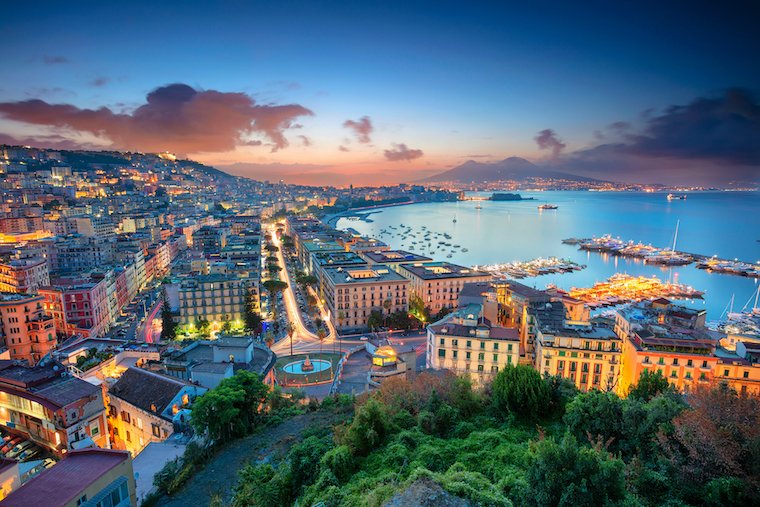We are in the province of Benevento, at the foot of Mount Taburno, where a small village, with its small churches and ancient dwellings, tends towards the sky, while its roots seem to be set in the high spur of tuff on which it rests overlooking the valley: this is Sant'Agata de'Goti, a small village with an unmistakable conformation, where the geological structure of the territory merges with the urban architecture and the landscape, now so peculiar as to be photographed all over the world, takes on fairy-tale contours on the border between dream and reality.
Sant'Agata de'Goti

Sant'Agata de'Goti is a village, listed among the most beautiful in Italy, in the province of Benevento, located on the slopes of Mount Taburno in the Caudina Valley. The peculiarity of this small centre is that the oldest settlement stands on a high tuff rock, which literally seems to merge with the houses above, perceived almost as an extension of the rock. The highest elevation is 159 metres above sea level. From the highest and oldest part of the village, the built-up area then develops, made up of narrow streets, squares and open spaces dotted with low, elegant buildings and historical religious constructions, in a succession of eras ranging from the Norman period to the Bourbon period, to which most of the civil architecture dates back. The village, silent and enchanted, welcomes visitors in an atmosphere of calm, projecting them into a dimension far removed in space and time. The town boasts a long history, which the most attentive will be able to glimpse by observing from afar, at one of the most famous vantage points, the very tuffaceous rock overhanging the void, where stairs, arches, small openings and tunnels bear witness to the long work of man in the area. The first urban settlements were made by the Romans who occupied the territory (then called Saticula) when they defeated the Samnites. In the 8th century, the city was then under Lombard domination and was named Sant'Agata in honour of the Saint. Later, in the Norman era, Sant'Agata was a fief of the Drengot family, a name that was pronounced 'De-Goth' during the Angevin era. That is why today, this village has the name Sant'Agata de' Goti.
The experiences to be had in Sant'Agata de' Goti are all related to the village and its ancient historical testimonies, to be discovered one by one during a long walk that will fill your eyes with beauty. Moreover, we would like to remind you that the village is located near the Taburno Camposauro Regional Park, a destination for beautiful nature excursions, and Telese, a centre famous for its thermal baths. Moreover, from here you can reach Caserta and Benevento in a short time. In Sant'Agata, it will be exciting to let yourself be guided through the town's narrow streets to its most famous attractions, such as the ancient Cathedral of the Assumption, dating back to 970, with its evocative medieval crypt, the church of San Menna in which traces of the Norman era still survive, or the 15th-century convent of San Francesco. In addition to these buildings, it is possible to admire the Longobard-era Ducal Castle or the numerous noble palaces that offer elegant views and views with an ancient flavour, to be carried forever in the heart and memory.
Eating in Sant'Agata de' Goti means immersing oneself in the genuine and authentic culinary tradition of the Benevento area, enriched by the local production of olive oil (the basic ingredient of 'nfrennule, i.e. salted taralli in the shape of a figure eight), pulses and the annurca IGP apple. Traditional first courses are those based on fresh homemade pasta, such as gnocchi or pacca (a kind of short, double noodle) to be eaten with beans. Also typical of the area is pane cotto, or stale bread seasoned with vegetables and pulses and flavoured with various spices, a hearty and tasty dish. Also excellent are the pappardelle with porcini mushrooms or truffles, accompanied by a local Piedirosso. Meat processing, as in the entire Benevento area, has a long tradition that you can also savour in local charcuterie boards made using artisanal methods that preserve and enhance all the flavour.
One of the best known and perhaps most eagerly awaited events in Sant'Agata de'Goti is the traditional 'infiorata' on the occasion of Corpus Christi, when the master 'infioratori' create marvellous decorations, colouring the streets of the village and creating a real spectacle. In June, on the other hand, Memoria Innovans is held, a precious opportunity to retrace one's origins and traditions thanks to exhibitions of period photos and tastings of typical dishes such as homemade pasta or annurca apples prepared in many versions. Another very special event is Papa 'NSisto: a series of meetings, exhibitions, shows and conferences, organised in the month of May, to celebrate the figure of Pope Sixtus V, who was deeply linked to the village of Sant'Agata de'Goti. In August, on the other hand, there is the gnocchi and cavatelli festival, which allows the townspeople and many travellers and tourists to savour the numerous traditional local dishes in the streets of the village, making the experience all the more evocative. Also in August, there is the unmissable Sansilvestrese festival, dedicated to gastronomy, ancient peasant trades and music: it lasts three days and is an event that involves the entire community in an atmosphere of sharing and joy.
